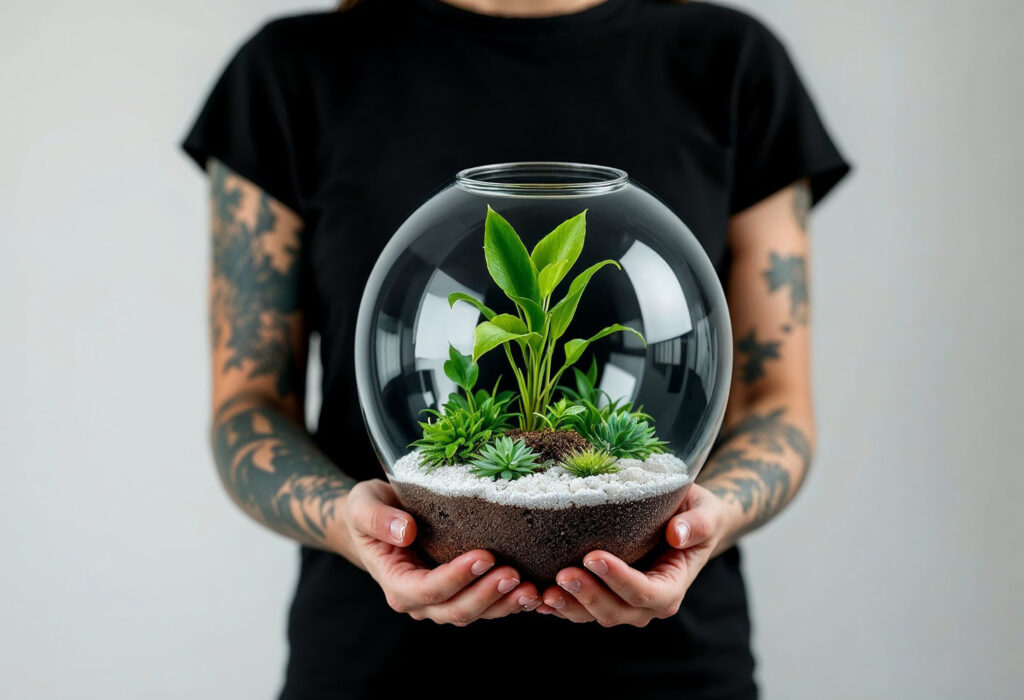A bioactive vivarium is more than just a terrarium or plant display – it’s a living, breathing ecosystem that brings a slice of nature into your home. These self-sustaining environments combine plants, beneficial insects, and microorganisms to create a balanced miniature world that requires minimal intervention once established. Let’s explore how to create and maintain these fascinating ecosystems.
Understanding Bioactive Systems
The beauty of a bioactive vivarium lies in its self-sustaining nature. Unlike traditional terrariums, bioactive setups include a complete cleanup crew of beneficial insects and microorganisms that break down organic matter, cycle nutrients, and maintain soil health. This natural process mirrors what happens in nature, creating a more stable and healthy environment for your plants.
The foundation of any bioactive system is the substrate. Multiple layers work together to provide drainage, filtration, and a rich growing medium for plants. The bottom layer typically consists of a drainage material like expanded clay pellets or crushed stone. Above this sits a substrate barrier to prevent soil from clogging the drainage layer, followed by a specially formulated bioactive soil mix that supports both plant life and beneficial organisms.
Creating the Perfect Environment

Temperature and humidity control are crucial elements in maintaining a thriving bioactive vivarium. Most tropical plants and beneficial organisms prefer temperatures between 70-80°F (21-27°C) and humidity levels between 60-80%. Achieving these conditions often requires a combination of proper ventilation, regular misting, and sometimes automated systems for larger setups.
Lighting plays a vital role in both plant health and the overall ecosystem. LED grow lights designed for terrariums provide the perfect spectrum for plant growth while generating minimal heat. Position lights to create natural gradients, allowing plants to find their preferred light levels. This variation in light intensity also creates microclimates within the vivarium, supporting a more diverse plant community.
Selecting and Establishing Plants
Choosing the right plants is crucial for a successful bioactive vivarium. Focus on species that naturally grow together in similar environments. Tropical plants that thrive in high humidity are excellent choices, including various ferns, mosses, orchids, and small tropical foliage plants. Consider creating different layers within your vivarium, just as you would find in a natural forest setting.
When planting, start with larger specimens and work your way down to ground covers and mosses. Allow adequate space between plants for growth, and consider their mature sizes when planning your layout. Root establishment is crucial in the first few weeks, so maintain consistent moisture levels and avoid disturbing the plants until they show signs of new growth.
The Cleanup Crew
The hidden heroes of a bioactive vivarium are the cleanup crew – various species of isopods, springtails, and beneficial mites that maintain the ecosystem’s health. These tiny organisms break down dead plant matter, control harmful fungal growth, and help cycle nutrients back into the soil. Different species serve different roles, so including a variety ensures all aspects of decomposition are covered.
Establishing a healthy population of cleanup crew organisms takes time. Start with a generous initial seeding and provide them with plenty of leaf litter and organic matter to feed on. These populations will naturally adjust to match the available resources in your vivarium, creating a balanced system.
Maintaining the Balance
Once established, a bioactive vivarium requires minimal maintenance compared to traditional plant displays. Regular misting, occasional pruning, and monitoring of environmental conditions are typically all that’s needed. The cleanup crew handles most of the day-to-day maintenance, breaking down dead leaves and other organic matter before they can become problematic.
Water quality is important in these systems. Use dechlorinated water for misting and avoid any chemicals that might harm the beneficial organisms. Many successful vivarium keepers collect rainwater or use reverse osmosis water to avoid mineral buildup and provide the purest possible environment for their plants and cleanup crew.
Troubleshooting Common Issues
Even well-established bioactive vivariums can face challenges. Excessive moisture can lead to harmful mold growth, while insufficient humidity might stress plants and reduce cleanup crew activity. Regular observation helps catch these issues early. If you notice problems, make small adjustments and allow time for the system to respond before making additional changes.
Pest management in bioactive systems requires a gentle approach to avoid disrupting the beneficial organisms. Many common plant pests can be controlled through biological means, such as predatory mites or nematodes, which can be safely introduced into the system. Prevention through proper plant quarantine and careful introduction of new materials is always the best strategy.
Advanced Techniques and Customization
As you gain experience with bioactive systems, you can experiment with more advanced features like water features, automated misting systems, or specialized lighting programs. These additions can enhance both the aesthetic appeal and functionality of your vivarium while providing even better conditions for your plants and beneficial organisms.
Consider incorporating natural elements like branches, rocks, or cork bark to create more diverse microhabitats within your vivarium. These additions not only enhance the natural appearance but also provide important surfaces for epiphytic plants and hiding places for beneficial organisms.
Creating a bioactive vivarium is both an art and a science. The key to success lies in understanding and respecting the natural relationships between plants, beneficial organisms, and their environment. With proper setup and patience, you can create a beautiful, self-sustaining piece of nature that brings life and wonder to your living space while requiring minimal ongoing maintenance.




